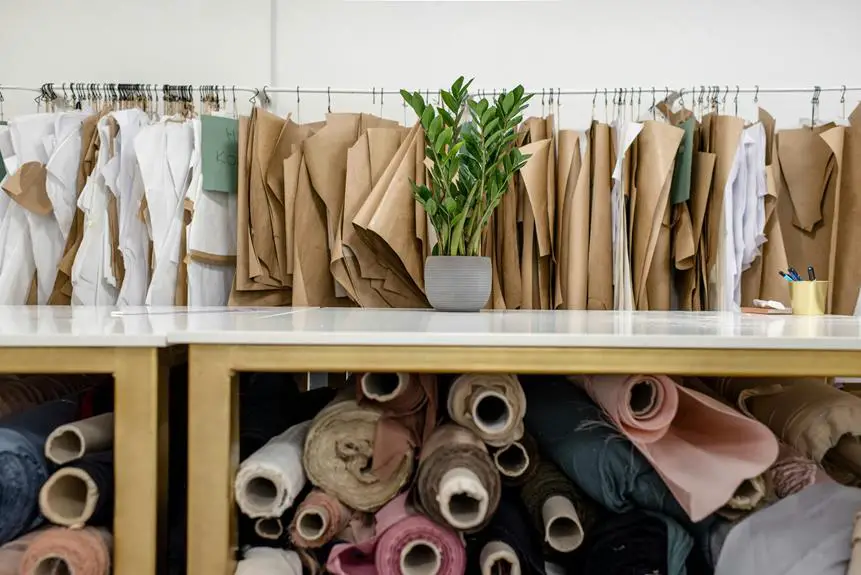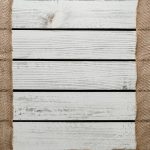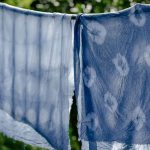You might not realize how cambric's journey from the fields of sustainable cotton to the runway reflects broader trends in fashion and sustainability. As you explore its rich history and the intricacies of its cultivation and manufacturing processes, you'll see how this fabric has adapted over time. The current fashion landscape embraces cambric's versatility, but what does that mean for ethical sourcing and design innovation? Understanding these elements could change your perspective on what you wear every day.
Table of Contents
History of Cambric
Cambric has its roots in the 16th century when it was first woven in the city of Cambrai, France. Initially, it was a fine linen fabric, prized for its delicate texture and lightweight nature. As you explore its history, you'll find that cambric quickly gained popularity across Europe, especially among the upper class who desired luxurious textiles for their garments and home decor.
By the 17th century, cambric had evolved, incorporating cotton fibers to enhance its softness and durability. This blend allowed artisans to experiment with intricate embroidery and decorative techniques, making cambric not just a staple fabric but a canvas for creativity.
As you delve deeper into the 18th century, you'll notice that the fabric became synonymous with fashion, appearing in dresses, shirts, and even household linens. The industrial revolution further transformed its production, allowing for mass manufacturing while retaining the charm that made it special.
Today, cambric's historical significance continues to influence modern design, offering a blend of tradition and contemporary style. So, when you choose cambric, you're not just selecting a fabric; you're embracing a rich heritage woven into every thread.
Cotton Cultivation Process
How is cotton cultivated to create the soft fibers that become essential in fabrics like cambric?
The journey begins with selecting high-quality seeds, which you plant in well-prepared soil, typically in warm weather. After sowing, you'll monitor moisture levels, ensuring the plants receive adequate water for optimal growth.
As the cotton plants sprout, they require careful attention. You'll need to manage pests and weeds, often using sustainable practices to protect the environment. Within a few months, the plants blossom, producing beautiful white flowers that eventually develop into cotton bolls.
Once the bolls mature and split open, it's time for harvesting. You can do this by hand or with mechanical cotton pickers, depending on the scale of your operation. After harvesting, you'll want to clean the cotton to remove seeds and debris, leaving you with fluffy fibers ready for further processing.
Through this meticulous cultivation process, you ensure that the cotton fibers are ready to be transformed into the soft, high-quality fabrics like cambric that you know and love.
Manufacturing Techniques
The journey from raw cotton fibers to finished cambric involves several key manufacturing techniques that ensure the fabric's softness and durability.
First, the cotton fibers are harvested and cleaned to remove impurities. After that, they undergo carding, where fibers get untangled and aligned, forming a soft mat. This process prepares them for spinning.
Next, you'll see the spinning phase, where the carded fibers are twisted together to create strong yarn. The thickness of the yarn can vary, impacting the final texture of the cambric.
Once spun, the yarn is woven into fabric using either a plain or twill weave, giving cambric its characteristic smooth finish.
After weaving, the fabric goes through a process known as finishing, which enhances its softness and can include treatments like bleaching or dyeing. This step is crucial for achieving the desired look and feel.
Finally, the cambric is inspected for quality, ensuring it meets industry standards.
With these manufacturing techniques, cambric emerges as a lightweight, durable fabric, ready to be transformed into various garments and textiles you can enjoy.
Fashion Trends and Cambric
With its lightweight and breathable qualities, cambric has become a favored choice in various fashion trends, seamlessly blending comfort and style. You might've noticed how designers are incorporating cambric into everything from casual wear to elegant evening dresses. Its versatility allows you to dress it up or down, making it a staple in your wardrobe.
In recent seasons, you'll find cambric shirts and blouses featuring bold patterns, vibrant colors, and intricate embroidery. These pieces easily elevate your everyday look, whether you're heading to the office or brunch with friends. You can also see cambric being used in layering, where it pairs beautifully with denim jackets or cardigans.
For those who love a bohemian vibe, cambric maxi dresses are trending, providing a flowy silhouette that's perfect for summer outings. Additionally, cambric's adaptability makes it ideal for accessories like scarves and lightweight shawls, which can add a pop of color to any outfit.
As styles continue to evolve, being on the lookout for cambric pieces can keep your fashion game fresh and trendy. Embrace the comfort and elegance that cambric brings to your personal style!
Sustainability in Cambric Production
Sustainability in cambric production hinges on eco-friendly farming practices and responsible sourcing of materials. When you choose cambric, you're supporting cotton farmers who prioritize sustainable methods, like organic farming. These methods reduce chemical use, conserve water, and improve soil health, ensuring a better ecosystem for future generations.
You should also look for brands that commit to ethical sourcing. These companies often collaborate with farmers who uphold fair labor practices and provide a living wage. By doing so, you're not just investing in a product; you're supporting communities and fostering economic growth in the regions you care about.
Additionally, consider the production processes. Sustainable brands minimize waste by using eco-friendly dyes and recycling materials, making it easier for you to enjoy fashion that aligns with your values. Transparency is key—brands that openly share their sourcing and production practices help you make informed choices.
Incorporating sustainability into cambric production isn't just a trend; it's a movement towards a more responsible fashion industry. By choosing sustainable cambric, you're playing a vital role in promoting environmental stewardship and ethical practices in fashion. So, make choices that reflect your values and contribute to a healthier planet.
Frequently Asked Questions
What Is the Origin of the Name "Cambric"?
The name 'cambric' originates from Cambrai, a city in France. You'll find it historically linked to fine linen fabrics produced there, gaining popularity in the 16th century for its lightweight and smooth texture.
How Does Cambric Differ From Other Cotton Fabrics?
Cambric's finer texture and tighter weave set it apart from other cotton fabrics. You'll notice it's softer and lighter, making it ideal for delicate garments, while other cottons can be coarser and heavier.
Is Cambric Hypoallergenic for Sensitive Skin?
Yes, cambric can be hypoallergenic for sensitive skin. Its tightly woven structure reduces allergens, and its softness minimizes irritation. However, individual reactions may vary, so it's best to test a small area first.
Can Cambric Be Used for Home Decor Items?
Absolutely, you can use cambric for home decor items! Its lightweight, breathable nature makes it perfect for curtains, tablecloths, and cushions. You'll love how it adds a touch of elegance to your space.
What Are the Best Care Practices for Cambric Garments?
To care for cambric garments, you should machine wash in cold water, avoid bleach, and tumble dry on low. Iron on a medium setting to maintain its smooth texture, and store it in a cool, dry place.
- How Does Ring Spun Cotton Affect Garment Fit and Shape Retention? - August 13, 2024
- What Are the Challenges in Producing Ring Spun Cotton? - August 13, 2024
- Is Ring Spun Cotton Suitable for Plus-Size Clothing? - August 13, 2024







